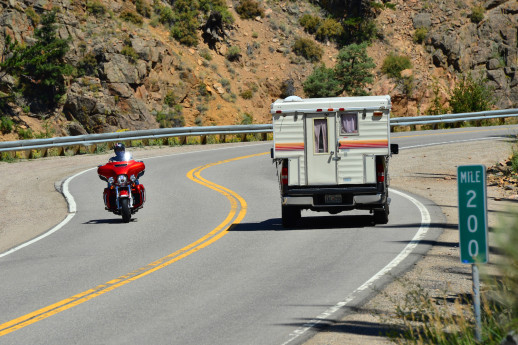Riding a motorcycle overseas where they ride on the other side of the road is not difficult, but it can be dangerous.
The hard part is adjusting to having the controls on the opposite side … just kidding!
I’ve been a motoring journalist for going on 15 years and have attended scores of international car and bike launches. It’s actually easier adjusting on a bike because the controls are exactly the same, whereas in a car you sit on the other side and have a gearshift and indicators on the opposite side.
Thankfully, all motorcycles have virtually the same layout with controls. It wasn’t always that way. Some bikes had gears, clutch and throttle the wrong way around, but they have been standardised pretty much since the 1960s.
With a bike, the only adjustment is roadcraft: You just have to remember “tight right” and “loose left” when making turns.
This is a little mantra you should chant every time you leave a carpark, service station or approach an intersection or roundabout.
Also, remember that you give way to traffic coming from the opposite direction.
Here are a few observations about riding on the other side of the road:
It is actually easier to ride on the right side of the road because of the standardised bike controls. Having your left hand free of the throttle means you can more easily wave to riders going past the other way. In the US, riders give a pretty cool wave consisting usually of just dropping the left hand off the bar and “saluting” with a couple of fingers. In Australia, UK and other left-drive countries, you have to remove your hand from the throttle, or nod, or lift you left hand up high to give a very uncool “royal” wave.
Another advantage of right-drive is u-turns. Instead of turning right, you turn left, which means your inside foot can drop off the pegs if you need to prop yourself in the turn. If you turn right, you would have to remove your foot from the rear brake if needed to prop yourself. It’s easier to do slow turns with your foot resting gently on the rear brake at all times.
The final advantage is parking. With the sidestand on the left, parking your bike on a downward camber makes it lean over a long way which makes it difficult to lift off the stand. On the other side of the road, you park on an upward camber which makes it easier. However, bikes that have upright stands can actually be more difficult to park.




